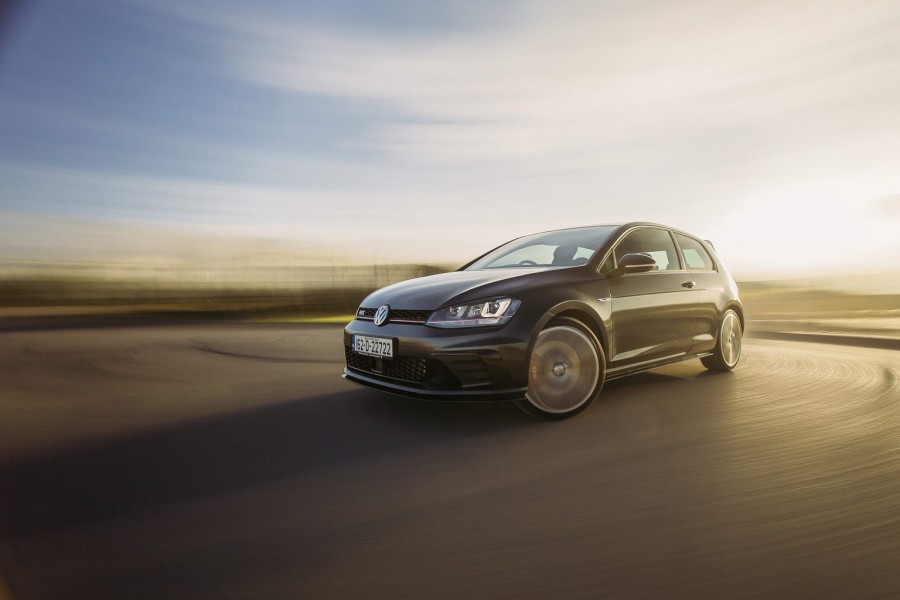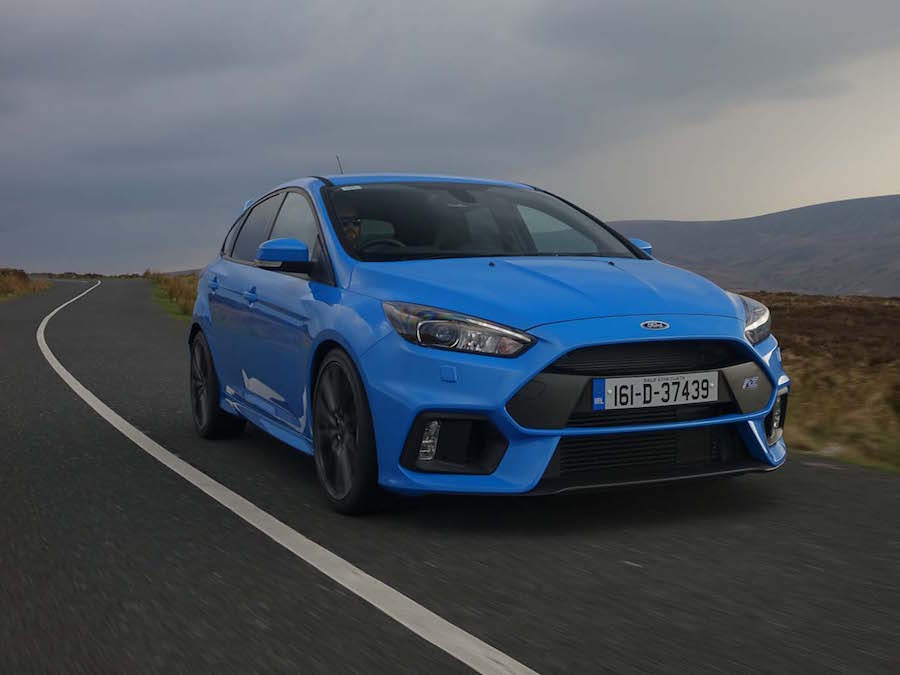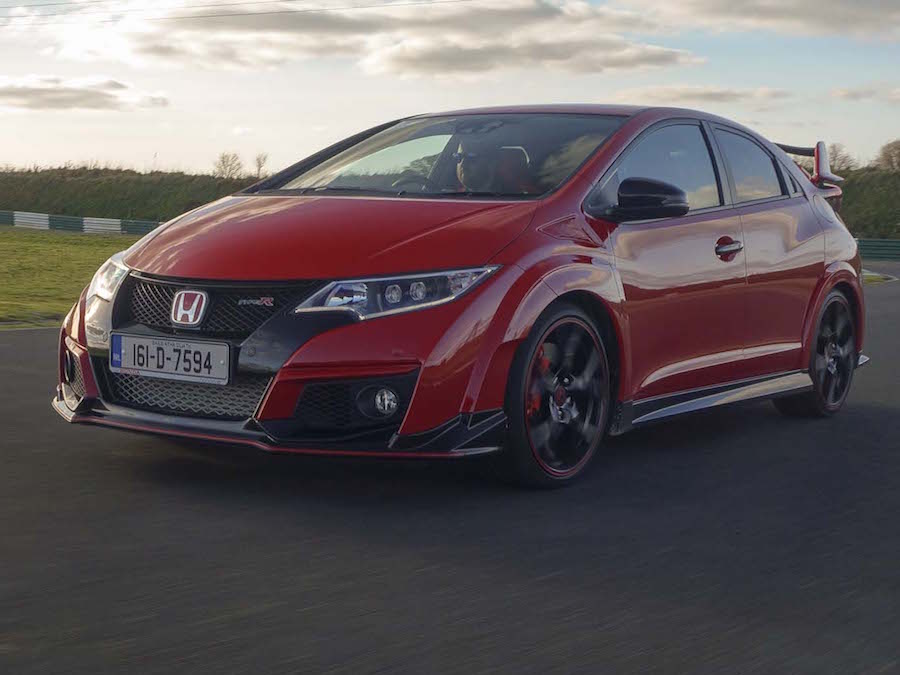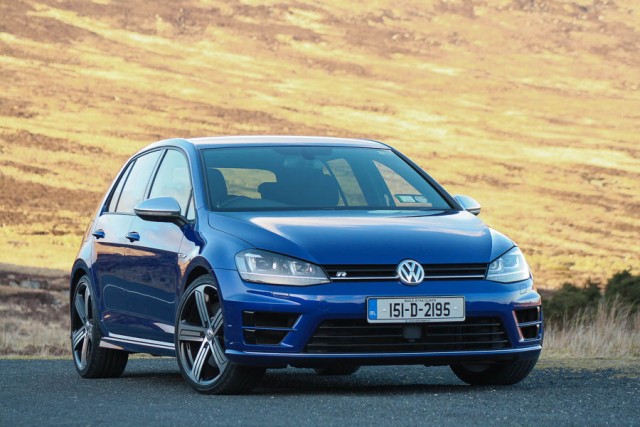Good: looks, power, handling, still does the usual Golf stuff so well.
Not so good: pricing is in Golf R territory, front differential could still be improved upon.
The Golf GTI ambled into middle-age territory this year and as a 40th birthday present to itself, Volkswagen created two special edition GTIs, the Clubsport and the Clubsport S. While the S left its rear seats behind at the Wolfsburg factory and headed straight to the Nürburgring to grab the front-wheel drive production car lap record, the regular Clubsport was designed to enhance the already competent GTI's traits for the road. Only 400 examples of the Clubsport S were produced and all are already sold, but there's still time to grab the tamer model.
Our test car's dark grey paintwork does a good job of masking the fresh styling details. There's a new front bumper with a splitter underneath and 'air curtains' designed to channel air around the front wheels at the sides, new side sills underneath a black graphic stripe with "Clubsport" lettering and a larger roof spoiler. Underneath the rear bumper is a new diffuser with integrated exhaust outlets. Volkswagen claims that all these aerodynamic additions actually produce downforce. No specific figures are given, but there is said to be a significant increase over the rear axle at speed, with a smaller increase on the front. While you may find it hard to notice this while driving at legal road speeds, any reduction in lift will aid stability. That's reinforced by new springs, dampers and bump stops, and this car rides on gorgeous 19-inch 'Brescia' alloy wheels.
Inside, there's a beautiful Alcantara-trimmed flat-bottomed steering wheel with red stitching and a red 12 o'clock marker, along with (optional) figure-hugging Recaros that hold one in place perfectly without being too uncomfortable on longer stints. The seating position is nice and low, and the rest of the cabin is typical Golf fare with some piano black and honeycomb trim added in, so it's a pleasant place to be. Those special seats make access to the rear rather cumbersome on the three-door model, but there's a five-door Clubsport available, too.
What about the rest of the mechanicals? The most obvious change is to the ubiquitous 'EA888' 2.0-litre turbocharged petrol engine, with output now at 265hp. That's not all though, as an overboost function gives up to 290hp and 380Nm for short periods in third gear and upwards when the throttle is pinned to the bulkhead. In reality, periods spent at full throttle for longer than that tend to be few and far between, and every one of those 290 horses can be felt. This thing is seriously quick. On greasy roads the traction control light doesn't stop blinking until you change into fourth gear, and for a turbocharged unit it's impressively lag-free. Maximum power arrives at 5,350rpm, and from there on the Golf really flies. The exhaust note is suitably loud and purposeful from the outside, while the synthesised note in the cabin is more reminiscent of a throaty naturally-aspirated engine than a forced induction powerplant, especially in Sport mode. It's just a pity that the sound is partly faked...
The six-speed manual gearbox is precise and short of throw, and definitely suits the overall character of the car more than the optional DSG transmission would. The suspension has been retuned to shift the balance away from understeer and there's a quicker ratio on the variable steering rack, too. While on paper these pale in comparison with the engine upgrades, they turn the Clubsport into an extremely competent car when the road gets interesting. Our test route in the Wicklow Mountains has fast bits, slow bits, crests and bumps that would make a World Rally Car wince and every grade of tarmac known to man, yet the Clubsport was unflappable there. It's not hugely throttle adjustable in the mould of the more extreme breed of vaguely old-school hot hatch, epitomised by the Renaultsport Megane, and the electrically-assisted steering is still lacking ultimate feedback, but it's definitely more agile and involving than the regular GTI. The recalibrated electronically controlled front differential works well, but the nose can still wash wide if you drive like a rock ape in the wet. It's not a big issue, and our test car's Pirellis may have contributed somewhat to that sensation. The brakes are the same as the ones fitted to the Performance Pack GTI, and are well able for sustained fast road use without suffering any discernible fade.
The whole point of a good modern hot hatch is that it can carry out mundane journeys with minimal fuss, but can also turn into a hooligan in an instant when the right road presents itself. Volkswagen brought this idea to the masses forty years ago with the original Golf GTI, and the Clubsport does it all with more panache than ever. A motorway jaunt followed by a trawl through rush hour traffic was handled with the same ease as a standard Golf would, and only the slightly stiffer ride offered any clue as to the potential underneath.
The biggest problem with the Clubsport is the fact that its older brother is the smooth and sophisticated Golf R. Both cost around the same, and for many people it's hard to turn down the Golf R's subtler looks and all-wheel drive security. For pure driving pleasure though, the Clubsport gets our vote. It looks great, and while the graphics and aerodynamic add-ons aren't for everyone, they certainly add a sense of purpose that's currently missing from the almost too smooth for its own good standard GTI. The Clubsport is the latest in a line of GTI anniversary models, and is the most fitting tribute yet to the hallowed original.

























































